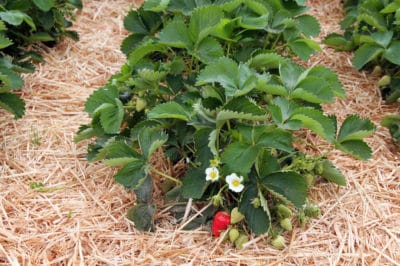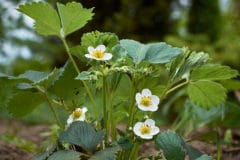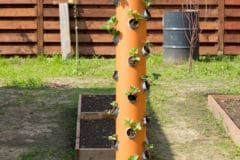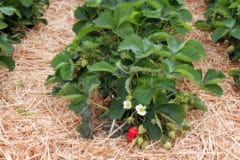Strawberry Basics
Strawberries in the wild grow in patches that slowly move over the ground by growing runners. Each runner can develop into a new plant. This allows the patch to renew itself and find fertile new ground as mother plants in the center become diseased or die. Gardeners take advantage of this growth habit to increase their plantings with healthy young plants.
Start with Soil
The most important thing you can do for your strawberries is to provide them with good soil in full sun. Soil pH should be between 5.5 and 6.0. Fertilize with 10-10-10 fertilizer in early spring and after harvest. You can also add organic compost and mulch to promote fertility. Kelp, greensand, blood and bone meal also provide additional nutrients.
Water Matters
Although strawberries need regular water, they can develop rot if the soil stays wet. Many gardeners use raised beds to promote drainage. Give your plants a minimum of one inch of water per week – more if it’s hot and windy. Mulch with straw or chopped bark to conserve moisture and keep berries clean. Drip irrigation and soaker hoses are often a good choice to meet the plants’ water needs.
Choosing Varieties
Strawberries can be grown in USDA Zones 3 through 11 as well as in greenhouses or indoors under lights. Choose the right variety for your climate, such as:
- Allstar – Zones 4-8
- Camarosa – Zone 9-11
- Clancy – Zones 4-8
- Earliglow – Zones 4-7
- Eversweet – Zones 5-8
- Seascape – Zones 4-9
- Sunset – Zones 9-11
- Wendy – Zones 3-8.
Managing Runners
Runners are the strawberry’s primary means of reproduction. Excessive runner production, however, can decrease blossoms and fruit. If you want the plant to spread quickly – as when filling matted rows – pinch off blossoms and let runners grow the first year. To get a big crop soon after planting, pinch off all runners to force growth to the mother plants.
Annual or Perennial?
Growing strawberries as annuals prevents disease and lets you work the plants into a garden rotation. June bearers are best for this system. If you go the perennial route, you can use June bearers or everbearers. You’ll need to plant strawberries in a new bed every third or fourth year to prevent disease taking over. Be sure to use runners only from healthy plants when trying to establish a new planting.












